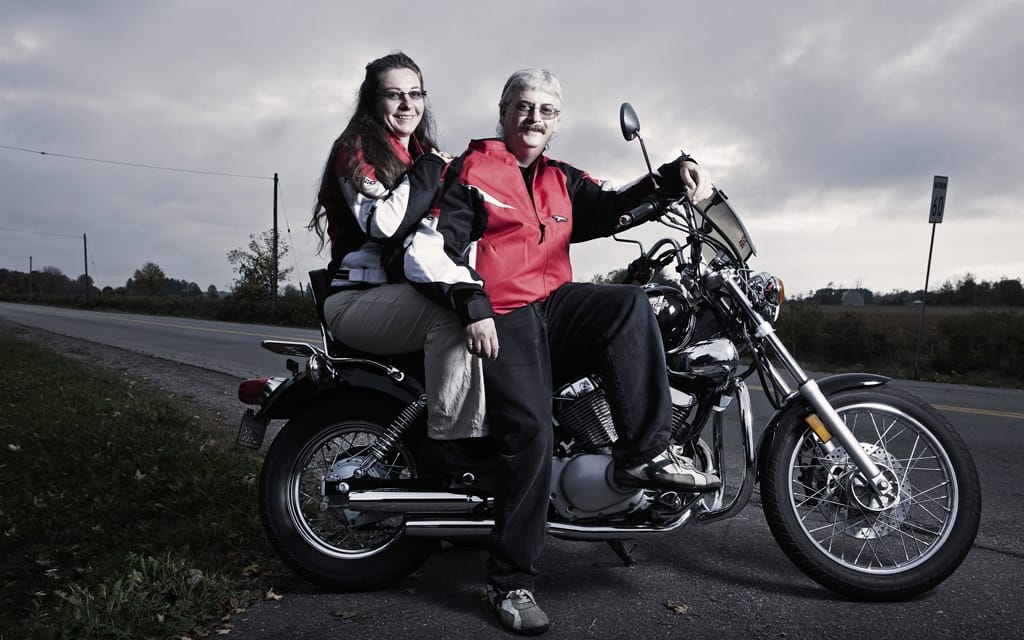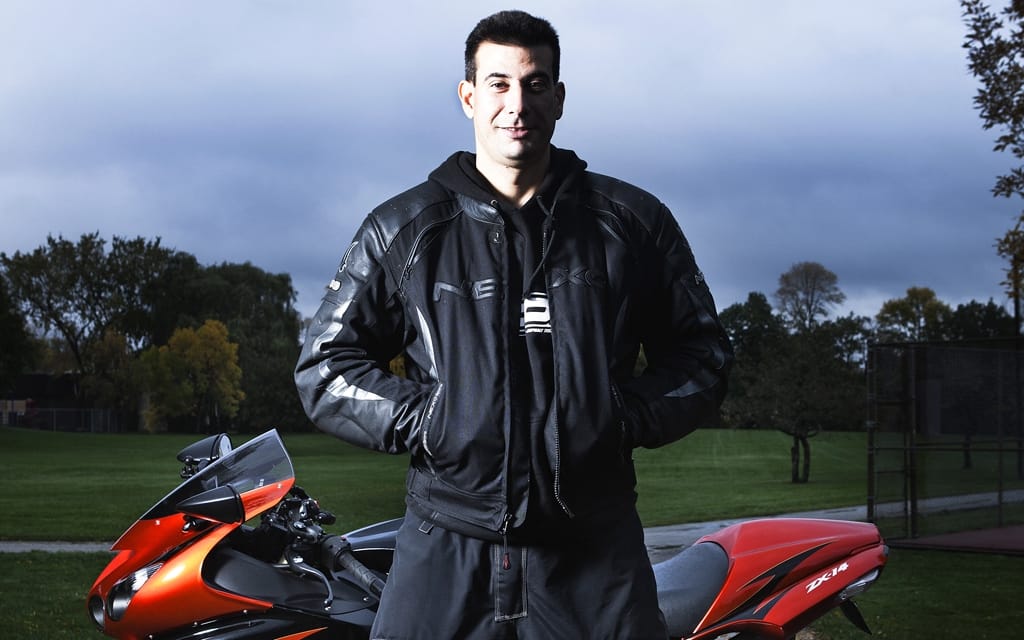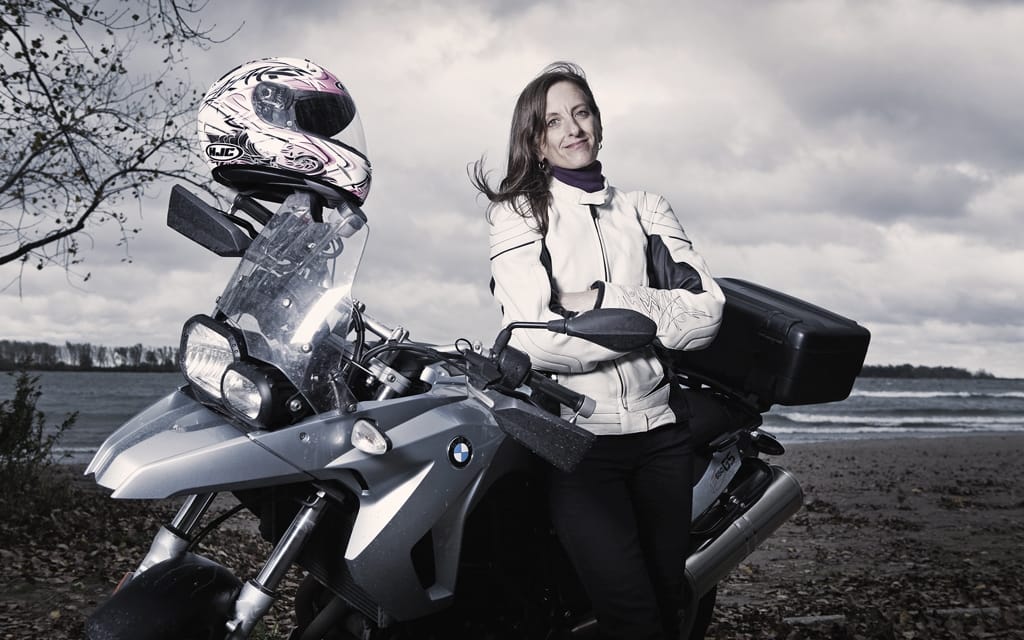You only get one chance for a good first impression.
First dates are never quite what they should be, and yet, somehow, they’re more. You don’t know this person very well, but you’re attracted; you feel excitement and potential energy, but you don’t yet have a lasting emotional stake in it. You hope that you’ll get lucky, whatever that means for you, and you know there’s a good chance you won’t. It’s all up in the air, like that energy we just mentioned. Everything is potential, nothing is realized. And yet, chances are, you’ll end the day richer than you started it.
In those qualities, first dates are like other initial experiences. Like, for example, the first day of your relationship with a motorcycle. Whether it’s your first or your fortieth, whether it’s so new you can smell the factory on it or falling apart with neglect, whether it’s just what you’ve always wanted or simply the best you could manage at the time, that first day is a singular event, a time of unexpected emotions and uncertain discovery. And, if you’re lucky, it’s Day 1 of a satisfying relationship.
There are some pairings that don’t appear to make much sense, however. Henry Boese bought his first motorcycle this summer, a 2003 Yamaha R6 sportbike. Henry bought it for essentially the same reason many of us get into relationships: he thought it was pretty. “I loved the look,” he said, “and I loved that Yamaha blue.”
DIDN’T HEED THE WARNINGS
He only learned to ride this summer, though, and the R6 is a pretty serious motorcycle. He trailered the Yamaha home to Elmira, a little town near Guelph, Ontario, and the next morning got insurance for it and took it for a ride. “It scared the shit out of me,” he admits. “I had no clue what I was doing on it.”
He said a lot of people warned him “that I shouldn’t buy that kind of bike — I could kill myself,” but he figured he could seal his fate on a cruiser just as easily, and the R6 had those killer looks. On that first day of riding, he got it out of town before he got it out of first gear, and he didn’t hit more than 80 km/h, even in sixth. “The engine was almost dying because the revs were so low.”
A couple of weeks later, he noticed that his left elbow was sore “all the time,” so he did some research, read a book called Sport Riding Techniques, and figured out how to sit on a sportbike without putting so much pressure on his arms. Now, about three months since he bought the R6, Henry still feels it was the right one for him. “The only time I really thought that I should not have bought this bike was the first time the front end came up on me.” It wasn’t like he was trying to perform a wheelie; it just sort of happened, he says. “Scared the crap out of me.”
We have a feeling that other new owners will empathize with Henry. Fear is likely one of the most commonly experienced emotions in these matters. Also commonly felt are more enjoyable emotions: elation, excitement, a kind of gleeful shock. It’s why we buy a motorcycle in the first place.
Except for their lessons at Sheridan College, Chris Knowles (not the former art director of Cycle Canada) and his wife Janette had not ridden a motorcycle in some time, and Janette’s emotional connection with a 2003 Virago 250 at Kelly’s Cycle Centre in Hamilton was unusual.
MIXED EMOTIONS
Her brother Pete had owned a Virago and had taken her for her last ride as a passenger. About 25 years ago, a truck’s trailer came loose and rammed Pete’s T-bird, killing him. “So Chris and I looked at the bike,” she said, “and yeah, we really liked this Virago. But you know what? That’s the same bike that Pete had, even though his was bigger. So it was mixed emotions.”
Because Kelly’s is located on a busy street, Chris, who had little street riding experience, asked them to deliver it. The shop took it to their home in Mount Hope and one of the shop owners took a photo of them with it. “He showed us everything that we needed to do on it,” said Janette. “And I’m like, Okay, I’m not sure I can handle all this!”
Chris was also nervous. They’re both in their mid-40s. Years before they met, they had each crashed on a motorcycle. “The last time my wife and I rode prior to the motorcycle course at Sheridan, we had both gone over the handlebar,” Chris said. “Both of us had a very similar incident, not understanding how the clutch worked, we went across the road, into a ditch, and over the handlebar. So getting back on the bike I was nervous.”
Chris’s first ride was a “wobbly” trek to the end of their street and back, but he got it up to fourth gear, around 60 km/h. “That was about as fast as I would go. But when I got on the bike and started to ride it, it was, Yeah, this was what I wanted. There was no question. The Sheridan course, they don’t sugar-coat anything. You know it’s dangerous. You don’t take it lightly, but being on a bike, hearing the motor go, the rush of the wind, even at 60 km/h, the first time was like ‘Oh that was fun!’ I had a really good feeling.”
Janette, meanwhile, was taking it a little slower, only riding in the high school parking lot, but she’ll get onto the street. Later, when Chris has gained some experience, he’ll buy a bigger bike and Janette will captain the family 250. Until, that is, she wants something bigger, too. For now, a 250 is plenty.
For David Josifovski, nothing less than 1,352 would do. Josifovski is a big guy with about four years of experience. He wanted something bigger than the Suzuki SV650 he’d been riding, something he could tour on with his wife and some luggage.
He did some research, sat on a Suzuki Hayabusa that didn’t feel right, and then discovered a website dedicated to Kawasaki’s ZX-14. “Reviews of the bike were just astonishing,” he says. He sat on one and was sold. “The seat height, everything about the bike just fit me perfectly.” When Josifovski posed some questions on the website forum, he got a response from Harry Halton, who owns Halton Performance, a Milton, Ontario shop that specializes in the ZX-14 and builds parts for drag racers.
MORE AT 11(000)
“I went to his shop, and he had about 10 of them lined up.” Josifovski liked the 2009 model’s black-and-orange paint scheme, but Halton didn’t have one. “He said he could get one with zero kilometres, but would have to charge extra.” Around the beginning of March, Halton called; he had the bike. “He said, ‘How are you planning on getting it home?’” Josifovski said he would ride it. “He said, ‘I will not give you this bike to ride home in the middle of March. If you want to make arrangements to pick it up with a tow truck or a trailer, I’ll be more than happy to turn it over to you.” So Josifovski rented a trailer.
When he got it home, he said, “I couldn’t wait to get on the bike.” He had never ridden a ZX-14, but had talked to people who had. “The guys at Kahuna Powersports warned me, the first two gears, take it easy, because the bike can get hairy.”
He started it, was impressed by the smooth and quiet character of the engine. Then he took it out of town, away from main roads, and gave it some throttle, middle of March or not. “I had to hang on. The bike is just madness once you open up the throttle. I was surprised, I mean the bike puts out 200 horsepower, so it’s just phenomenal. In the first couple of gears you’re holding on for dear life.”
It was an unused two-year-old bike, but he wasn’t worried about stressing the engine. He had found mixed advice about breaking in the 1,352 cc Kawasaki mill, but Harry Halton had told him that it’s “actually cruel to the bike” to keep the rpm level below 6,000. “Because it makes so much power in the whole rpm range. He said it’s not going to make a difference whether you open it up or not. I took his word for it.” So he let it rip. “I redlined, I hit 11,000.” Josifovski said the ZX-14 is the most powerful motorcycle he’s ever ridden. “It comes alive at 8,000. It points the front tire at the moon.”
Naturally, he was pleased. Halton had charged him $10,000 for the bike, which he seemed to feel was a lot of money but which is actually a very good deal. “Spending that kind of money, I was hesitant, I didn’t know what to expect, but once I got on the bike and the thrill that it gave me, and how excited I felt when I got off the bike, I didn’t care what I spent on it.” Six months later, he was still happy with it. “I have no disappointment about the bike, not when I first rode it, and not today.”
Derreck Roemer also had concerns about breaking in a brand new bike, but this one was a 2011 model, a Ducati Multistrada that he decided he needed after testing one for Cycle Canada. It was, as he mentioned in the September-October CC, considerably more expensive than Josifovski’s ZX-14. Not the kind of thing you want to treat with bad advice.
BREAK IT IN LIKE YOU STOLE SOMETHING
For good advice, he turned to the Internet, of course. He went looking for Ducati’s own break-in recommendations, but he found a website that was authored by a guy who calls himself Motoman and that promoted a somewhat controversial notion. If you don’t want your bike to be fast, don’t break it in fast. Motoman “makes quite a compelling argument” for the fast break-in, Roemer said. He was tempted, but unsure, so he turned again to the Internet. And yet another website came up, saying about the same thing as Motoman. You have to give Roemer credit for not banging his head into a wall. On one hand, the manufacturer says baby it or you’ll wreck it; on the other, a guy who calls himself “Motoman” but who seems to have rationally studied the issue says baby it and you will wreck it. In the end, he accepted that second website’s recommendations as corroboration. See if you agree with the theory.
It’s pretty simple: a new engine wears a crosshatch pattern on its cylinder walls, intended to contribute to a sort of filing of the piston rings, and since nothing made by humans is perfectly round, this filing action helps imperfect piston rings match the imperfections in cylinder walls, thereby creating an airtight match. But since that cross-hatch is quite fine and will wear down in a matter of minutes (after all, you don’t want it to continue sanding away at your piston rings forever), it must do its job very quickly. That’s why Motoman and some others recommend running your new engine hard right away: you need the hard combustion pressures of high revs and open throttles to force the piston rings firmly against the cylinder walls, to get the rings honed to fit while there’s still a hone in there to do it.
Roemer bought the Multistrada at GP Bikes in Whitby, Ontario around the end of July. On the ride home, he pushed it hard in second, third, and fourth gears, getting it up to 200 km/h once, following Motoman’s advice. Since then he’s put on about 1,000 km — he’s been too busy to ride more than that — and the bike doesn’t appear to have suffered from its initiation to the road. We’ll have to check in on him and his Ducati a few years down the road, but for now, he’s confident he did the right thing.
And even though he had ridden a Multistrada for a Cycle Canada test (June 2010), he had forgotten how powerful the bike is. “It was a pretty big shock,” he said. “A thrilling shock. It was like, Holy shit!” That sounds to us like elation.
Around the time that Derreck was wrestling with the notion of spending a lot of money on a Ducati, his wife Karen Steele was looking for a second-hand motorcycle. She found a nice BMW F650GS in a village in Quebec, and decided to go there and pick it up.
HOLY SHIT
She didn’t come close to riding her new Beemer on the day she took possession of it; it was too early in the season. “I wasn’t interested in hitting snow on a bike I hadn’t ridden before.” She and Derreck took it home to Toronto in a van, and she sat in the passenger seat so she could keep an eye on the bike back there. “It was like we were transporting a human heart or something. It was pretty exciting having this bike behind me, but I was a little apprehensive about the size of it.”
She took some iPhone pictures of it, trying to get herself into the frame with her new BMW. They didn’t turn out very well, but that didn’t stop her from sending them to her friends. “Look what I’ve got!”
About 10 days later, after she had made it legitimate for use on Ontario roads and given it a few mechanical pick-me-ups, she did ride it, and the event was a revelation. “It’s a big bike for me, and I thought I’d be overwhelmed with the size and the power of it, but when I finally did get on it, and stopped overthinking about the size of the bike, I loved it. I was expecting that it would be a bike that I’d have to get used to, but I felt at ease right away. I was kind of laughing at myself for being scared of the bike without having any concrete evidence to be scared of it. It was just all in my head.”
As she was riding, something else occurred to her: “I thought, Holy shit, this is fantastic!”
Now, she’s gotten used to it, and she has no regrets about her choice of motorcycle. “The first few times that I rode it, I was commuting to work and back, and I’d come home and I was like a kid on Christmas morning, I’d come home beaming and telling Derreck how much I loved the bike and how comfortable I was on it.”
Did we get lucky, or do most owners experience both fear and exhilaration with their new motorcycles? Among the five people we spoke with (and a few others we didn’t have room to include) there was unanimity: Day 1 may have started uncertainly, but turned out to be the beginning of what could be a very satisfying relationship.








